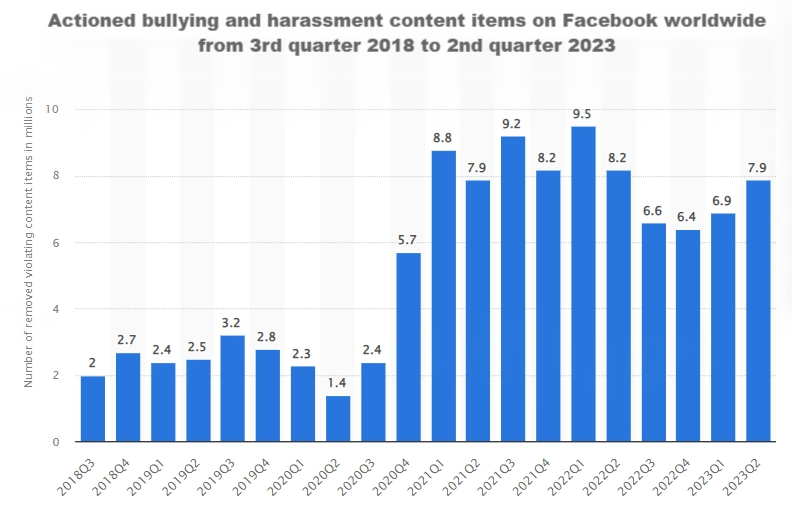The current climate of social media
A recent report by the cloud service Domo has revealed that every minute, Facebook users share 1.7M pieces of content, Twitter users send 347.2k tweets. and Instagram users post 66k photos. With so much data being generated every day, investigating it is like looking for a needle in a haystack. The increase in users is only one side of the coin - the other side is the increase in the percentage of crimes that occur through these platforms.

Increasing number of users
In the last 12 months alone, 137
million new accounts have been opened on social media platforms, bringing the global
user base to a staggering 4.76 billion as of January 2023, with users spending an
average of 2.5 hours a day on these sites. According to Statista, Facebook has the
most users at 2.958B, followed by YouTube (2.514B), WhatsApp (2B) and Instagram
(2B). Incredible numbers that testify to the tremendous growth of this phenomenon.
Unfortunately, as the user base continues to grow, so does the number of bad
actors. As illegal activity on social media platforms increases, the scale and
variety of crime migrating into the online realm becomes increasingly apparent.
However,
as social media companies carefully monitor cases of harmful content, appropriate
countermeasures have been put in place. By the second quarter of 2022, Facebook had
removed nearly 18 million pieces of content from its platform that violated its
policies, including material related to bullying, harassment and fraud - with the
number of scams circulating skyrocketing.
In fact, the ballooning number of
scams has reached the point where they are now becoming commonplace. In a survey
conducted by Lookout, users reported seeing a scam on social media at least once a
week, with the incidence of instances varying by platform - Facebook led the way
with 62 percent and LinkedIn was at the bottom with 31 percent.

Social media crime on the rise
The proliferation of social
media users provides new opportunities for cybercriminals to expand their
activities. In 2022, Facebook's parent company Meta discovered more than 400
malicious iOS and Android apps targeting mobile users to steal their Facebook login
details. Many of these are photo-editing apps, and some are utility-oriented,
claiming to offer hidden features not available on major platforms.
Instagram
is now growing in popularity as a middle market for the illegal drug trade, with
many buyers and sellers finding it easier to connect and do business through the
widely used platform. According to an ABC News article, one seller claimed their
daily sales tripled after moving online.
Meanwhile, the FTC reported that
U.S. consumers lost $8.8B to scams in 2022. That's a whopping 30 percent increase
from the $5.8B lost in 2021. While phishing and ransomware attacks remain high on
the list, love scams are also proving to be a widespread problem - Americans lost a
total of $1.3B in 2022. Sweetheart scammers use tactics to establish a false
"relationship" with their targets and ask for money for airline tickets or urgent
health issues.
Global cybercrime is expected to cost users a total of $8
trillion by 2023, and social media plays a significant role in that number. Since
COVID, online fraud has grown rapidly, driven by the mass migration to remote work
and the targeting of employees by cybercriminals to gain access to sensitive
corporate data.
Echoing the specter of the turn-of-the-century Internet
bubble, the rise of cryptocurrency millionaires has led to an increase in investment
scams. Fraudsters are taking advantage of users' hopes of earning life-changing sums
of money through well-timed investments. However, time and time again, these
"opportunities" are showing themselves to be nothing more than daydreams, with
reported losses of over $2.5B.